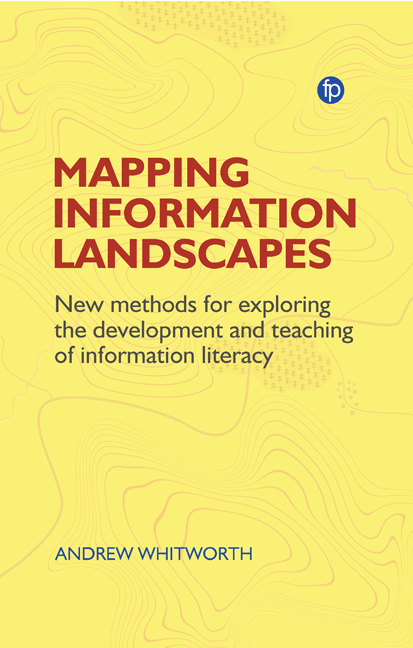 Mapping Information Landscapes
Mapping Information Landscapes Book contents
2 - Maps and Mapping
Published online by Cambridge University Press: 23 July 2020
Summary
Introduction
This chapter explores how mapping has been used over the last two millennia as a technique for documenting, representing and communicating understandings of the world around us, and how it has consequently impacted on our perception of place and time and our ability to navigate the landscapes (mapped and unmapped) that we encounter. It examines mapping as a genre of communication, a methodology, and a social, material knowledge-forming practice. Starting here, but continuing more explicitly in Chapter 3, it also investigates mapping as a source of power: maps can empower their users, but also disempower them (and others), particularly if one is left ‘off the map’ for any reason (Bonnett, 2015).
This is not a story written by a cartographer or geographer. Scholars in these fields have documented the rich history of mapping both by examining the documents that it has produced (that is, the maps themselves) and by analysing mapping as a practice that helps us both produce the world and consume it (Kitchin et al., 2009, 4; Cosgrove, 1999). I am not making any substantial additions to these histories. But as my goal is to establish the educational value of mapping and how it can help learners make informed judgements about information, I must explore mapping as an epistemological and methodological practice; a way of developing, and validating, knowledge about information landscapes and the social sites with which they are integrated. Put simply, what can we learn about our information landscapes through mapping them? How can mapping help learners engage with the different modalities of information (epistemic, social and corporeal), and the different stages of information processing (selection, organisation and communication)?
Lloyd mentions this possibility on several occasions. Early on in Information Literacy Landscapes she says:
Information landscapes are the communicative spaces that are created by people who co-participate in a field of practice. As people journey into and through these landscapes they engage with site-specific information. This engagement allows them to map the landscape, constructing an understanding of how it is shaped. It is through this engagement that people situate themselves within the landscape.
(Lloyd, 2010a, 2, emphasis added)- Type
- Chapter
- Information
- Mapping Information LandscapesNew Methods for Exploring the Development and Teaching of Information Literacy, pp. 23 - 50Publisher: FacetPrint publication year: 2020


